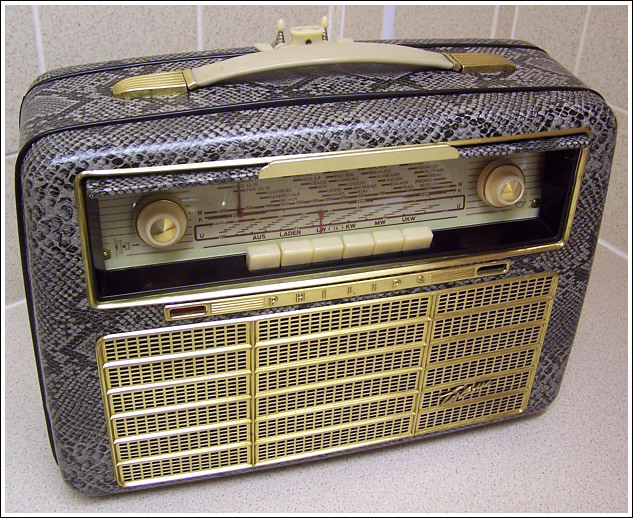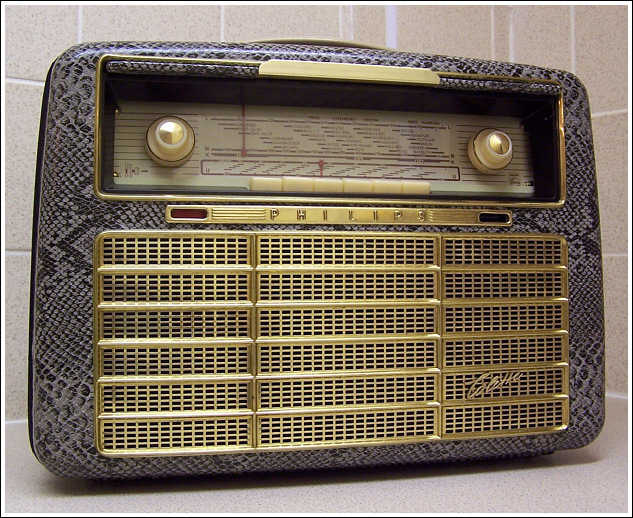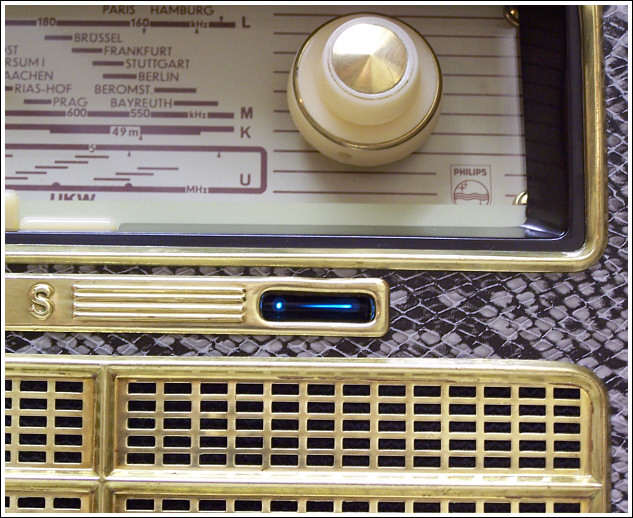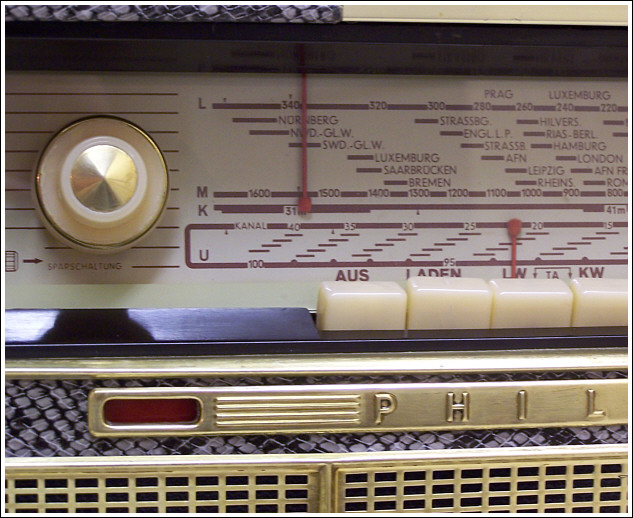
1. Introduction
The Philips Colette LD562AB is a luxurious mains/battery valve portable offering LW, MW, SW (band spread 31 to 49 metres) and VHF (87.5 to 100 MHz) wavebands.

It was released in Germany in 1956 and in The Netherlands a year later as the virtually identical L5X62AB "Clipper" model.

At the time of its release the set was an expensive top-of-the-range offering, with some quite unusual and innovative features.
The set makes use of 10 miniature battery valves in total and the design employs three IF stages using DF97's, the two IF's used being 10.7 MHz and 460 kHz.
The circuit uses two DL96's in push-pull configuration that provides excellent quality audio from a double-coned loudspeaker.
An odd feature is the use of a DM71 "magic-eye" as a phase splitter for the output stage. I understand that late on in the production of the set Philips discovered that the audio quality fell short of expectations - at the eleventh hour they got around the problem by rewiring the DM71 as a phase splitter.

This cured the audio issue but prevented the valve being used as a tuning indicator as originally intended - the valve just illuminates to indicate the set is switched on.
There is a separate oscillator valve on AM that also provides the bias for the output stage from its grid leak. This valve still has to continue to provide bias when VHF is selected and so is placed on to 1250 kHz whilst this band is in use.
The LT circuit is unusual in that a DEAC ni-cad cell is permanently wired into the LT supply to provide voltage stabilisation and smoothing. Without it the LT voltage can easily rise high enough to destroy all of the valve filaments.
A front panel push button is provided, marked "Laden", to put the ni-cad on charge whilst the set is switched off. On this position there is a 12V, 3W bulb in series with the cell to limit current and to remind you that charging is taking place.

The set is powered on batteries by a pair of 1.5 volt D-cells for the LT, together with a 90 volt battery for the HT. The D-cells are connected in parallel with the DEAC ni-cad, and the set is switched over to battery by inserting the 2-pin mains plug into an internal socket on the power supply board.
An economy switch is also provided which is operated by pulling out the volume control knob. This switches off half of each of the two DL96 output valve filaments, so prolonging the LT battery life.